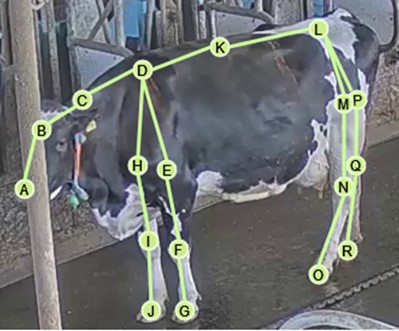
In livestock farming, we work with advanced computer vision methods to develop practical solutions for the diverse challenges faced by this agricultural sector. These methods are tailored to the individual requirements of different species, ranging from cows and horses to poultry and even fish and insects. The criteria that matter to stakeholders in the sector such as usability and price tolerance in relation to hardware are taken into account from the outset.
The technologies we have developed facilitate the constant and fully automated monitoring and documentation of animal behavior and vital data and are thus supportive in achieving compliance with and verification of animal welfare standards. In this way, we assist farm operators in meeting ecological and social standards as well as maximizing economic sustainability.
 Fraunhofer Institute for Computer Graphics Research IGD
Fraunhofer Institute for Computer Graphics Research IGD